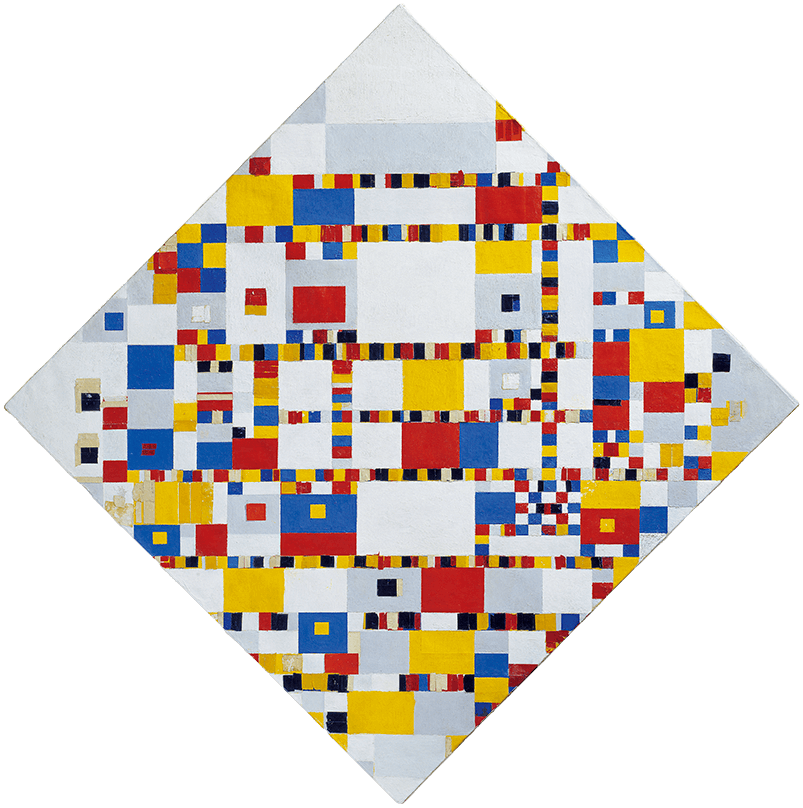


Piet Mondrian
1872 – 1944
Piet Mondrian is regarded the pioneer of abstract art. Before he came up with his famous abstract paintings, he went through many art styles.
At a young age he was taught drawing by his father, who was, among other things, a drawing teacher. It was obvious that he would also become a drawing teacher. But Mondrian had put another dot on his horizon. His aim was to enrol in the Rijksacademie in Amsterdam, which he succeeded in 1892. He painted landscapes, still lifes and portraits in the common styles of that time such as Impressionism, Fauvism and Expressionism.
In 1912 he moved to Paris where he learned about the cubist works of Picasso and Braque. In Cubism, visible reality is fragmented. It seems as if you are looking at things through a broken window. Mondrian adopts this style but combines it with his own theoretical views.
His father’s illness and the outbreak of the First World War made him return to the Netherlands. abstract From 1917 he only makes abstract paintings. He called himself an abstract realist because he was inspired by reality. In the same year he made a series of paintings of ‘dancing’, rhythmically ordered colour planes. He ruled out the comparison with observable reality by using only the ‘primary colours’ red, blue and yellow, supplemented by non-colours such as grey, white and black. From this moment on, he also arranged planes and lines only horizontally and vertically. It seems very simple to make these works, but Mondrian was looking for the ultimate composition of lines, colours, and planes. Until his death he tried to make the ideal painting. He said about this:
“I construct lines and colour combinations on a flat surface with the aim of portraying general beauty as consciously as possible. […] I want to come as close as possible to the truth and therefore abstract everything until I come to the foundation … of things. […] I believe that it is possible by horizontal and vertical lines, constructed consciously but not calculating […] if necessary supplemented by other directional lines or curved lines, if necessary, to arrive at a work of art as strong as true.”
Due to the threat of the Second World War Mondrian, first left for London in 1938 and in 1940 for New York. There he was taken care of by Harry Holtzman, who not only helped him to a studio, but also bought furniture and a record player for him and introduced him to boogie-woogie and blues music. Mondrian was also immediately accepted in the New York avant-garde.

Mondriaan, Victory Boogie-Woogie, 1942-44 (unfinished)), oilpaint, tape, paper, charcoal and pencil on canvas, 127.5 x 127.5 cm. Collection Kunstmuseum, The Hague
